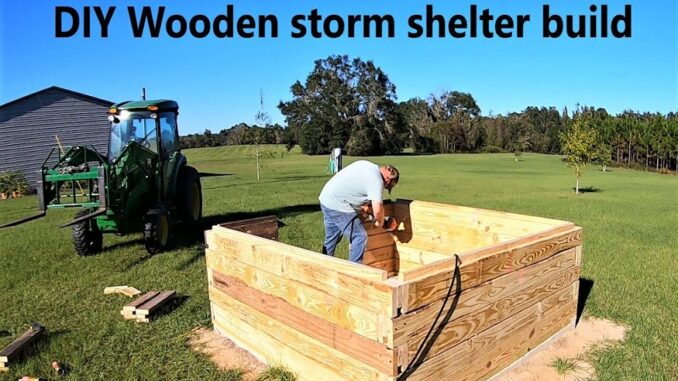
Living along the strip of Texas, or in the coastal regions susceptible to hurricanes storms and frequent tropical storms? A home shelter can make a huge difference between life and death and keep families safe from the ravaging damages of these calamities.
This post outlines home storm shelter building ideas everyone should know to build strong and accommodating Texas home storm shelters for protection during storm emergencies. Read through for more.
What Is A Home Storm Shelter?
Also known as a safe room, home storm shelters are reinforced structures built to resist high-velocity winds accompanying tropical storms, tornadoes, or hurricanes, and moving debris they carry along with them.
A storm shelter built under the Standards for the Design and Construction of Storm Shelters guidelines of the International Code Council (ICC 500 standards) should stand strong even after the storm’s homes and houses are flattened, picked, or carried away.
Check the key ideas below for consideration when building storm shelters.
Essential Safe Room Construction Ideas.
Whether it is restructuring a safe room in the house or building an outside stand-alone storm shelter, fundamental ideas do not change.
These guidelines are provided by the Federal Emergency Management Association, FEMA to help people follow the ICC 500 standards for building Texas home storm shelters. Check out some basic guidelines from FEMA below.
Anchor the safe room on a strong foundation based on the house’s geographic position according to the storm’s direction.
Build a wall with reinforced concrete. For retrofitting purposes, reinforce concrete walls using extra steel and grout.
Use only a recommended safe room door for maximum protection.
Ensure the storm shelter has a concrete roof.
Liaise with the certified engineer in the area before putting up the structure. This is important as some designs depend on the location of the home.
Basement safe rooms should not be built in flood-prone areas. They are also not safe for people with mobility challenges.
Recommended Sizes For A Home Storm Shelter.
Generally, the size of a safe room depends on the type of storm affecting the area. For a hurricane that lasts for more than 24 hours, the requirements vary between 7 to 10 square feet. For tornadoes, which take minutes to last, the minimum recommendation is 3 square feet per person.
Remember that spaces need money when creating a comfortable storm shelter. So, the bigger the room, the more money to be used.
A Prefabricated Safe Room.
For a more affordable option, choosing a prefabricated safe room can be an ideal option. These structures are commercially available at affordable prices.
Generally, prefabricated safe rooms have everything needed for storm protection except the foundation. However, even if it is tested and approved for strong winds and missile protection, a storm shelter is safer with a strong foundation. Confirm the safe room if it meets the ICC 500 standards.
Safe Room Door Recommendations.
While it is possible to have the strongest safe room in the house, a skimp in the door can render the strength of the shelter room useless. Only use door assemblies with a label from a licensed testing agency and proven tests to resist high impacts and extreme wind velocities.
Doors for tornado-prone areas must pass a static pressure test, and the ones in hurricane areas must undergo both cyclical and static pressure tests. Ensure all the doors pass a missile impact test of 15-pound 2×4 moving at 100mph.
Conclusion
Home storm shelters are important structures for people living on the coastlines or tornado alleys prone to tropical storms. They can make a significant difference between life and death.
While there are people with basic building skills that can design these shelters themselves, there are basic guidelines to follow. Consult an approved engineer for advice on how to design one based on the geographical position of the home.

Leave a Reply
You must be logged in to post a comment.